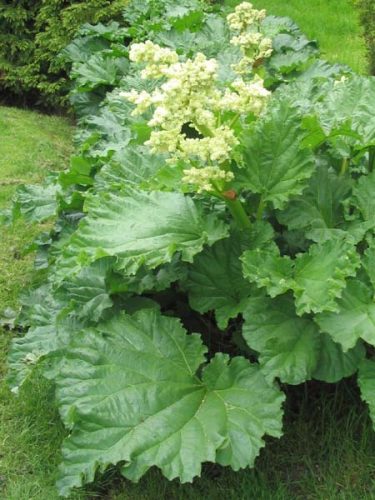Rhubarb is a perennial, hardy, deciduous plant belonging to the knotweed family.
You are viewing the mobile-adapted version of the page.
The one for tablets, laptop and desktop also provides general information, such as origin and cultivation.
Rhubarb – (Rheum rhabarbarum) is a perennial, hardy plant belonging to the knotweed family (Polygonaceae). It loses leaves in winter, sprouts in spring. Cut away the flower buds, growing flowers costs the plant energy. Plants with mostly red petioles are sweeter than those with green ones and are also smaller. Do not harvest petioles the first year after planting. Harvesting is done by pulling the stem with leaves from the plant. If a petiole is cut off, there is a good chance that the piece of petiole left behind will rot. In winter, fertilize liberally with farmyard manure. Rhubarb likes fertile, slightly acidic soil. pH-neutral soils can be made slightly more acidic with peat. In winter, fertilize liberally with farmyard manure.
Rhubarb contains oxalic acid. Leave more than two-thirds of the leaf stalks after harvesting to keep the plant healthy. The younger the stems, the better the flavor.
Bugs
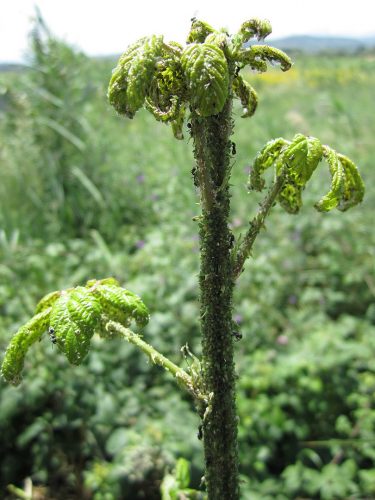
Deformed leaf: aphids.
Fungi & diseases
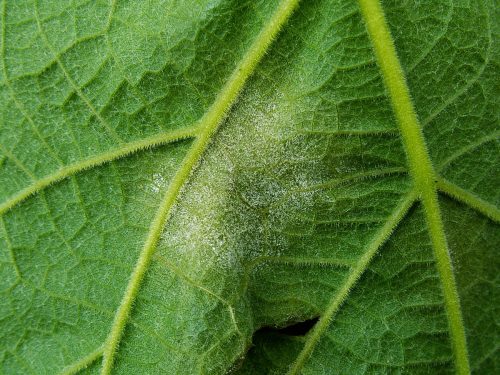
Angular spots, fungal fluff on the underside of leaves: downy mildew.
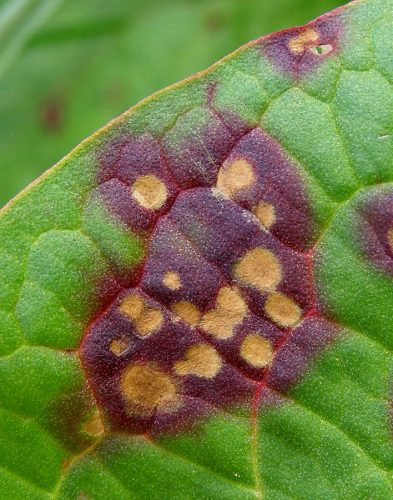
Light spots on leaves, later turn brown, holes in leaves: Rhubarb Leaf-spot (Ramulaira rhei).
Other
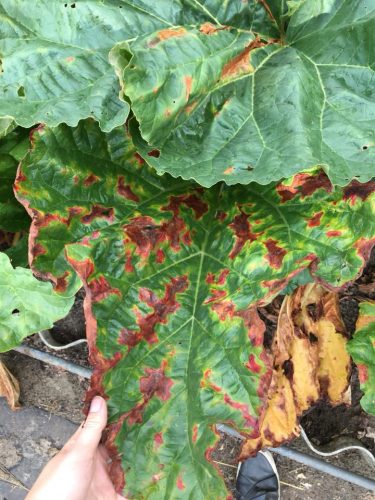
Rhubarb leaves turn brown and die: normal shedding process, but already takes place during summer.
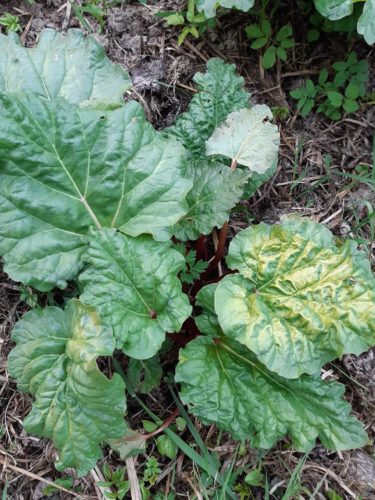
In early spring, yellow spots on leaves: frost damage. If these spots occur later in the year, deficiency disease is more likely.
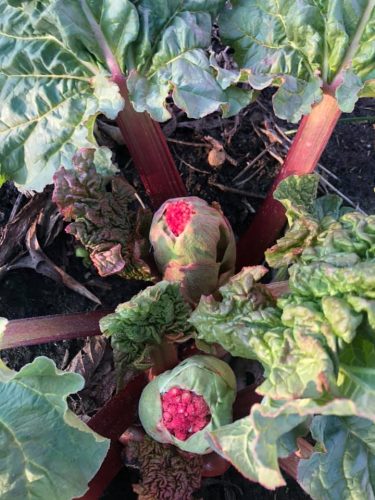
Among the leaves in spring, thick tubers form: these are the flower buds of rhubarb. In general, flower buds should be removed: these deprive the plant of much food. If there are several plants, allow the flower buds to sprout. The umbels are beautiful and a source of food for insects. By the way, rhubarb often starts flowering as a sign that the plant lacks nutrition – fertilizing after flowering is then necessary.

